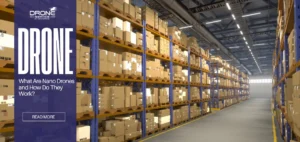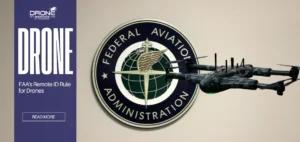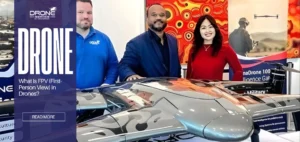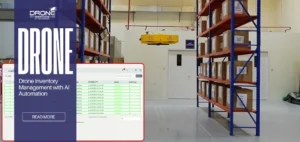What Are Nano Drones and How Do They Work?

In today’s world, aerial technology is evolving, more accurately shrinking. Drone innovation now heavily focuses on the miniaturization of the technology. It paved the way for the rise of incredibly compact, palm-sized drones.
These are called nano drones, tiny devices that are completely changing the game of drone technology. Not to mention it’s quickly dominating the compact drone market. The versatile nature of these nano drones has piqued the interest of both consumers and professional nano drone users.
What Are Nano Drones?
Nano drones are classified as the smallest class of UAVs. This is based primarily on their size and weight, which is usually under 250 grams. Because of their weight class, they are often exempted from some of the complex registration laws.
Their compact size is their most defining characteristic, which is also why they are ideal for various applications.
Definition and Classification
Typically, drone classifications can be confusing. Let’s clarify the differences below.
- Nano Drones: Typically under 250 grams and designed for maximum portability.
- Micro Drones: These are usually between 250 grams and 2 kilograms and often have better cameras.
- Mini Drones: this term is often interchanged with microdrones; however, sometimes it’s both micro and nano drones. But for clarity, the smallest class is nano.
The common size, weight, and price range make them accessible and are often the entry point for new pilots. And despite their size, modern technology gives them very high capabilities. Their small stature is actually a major advantage.
Key Features That Make Nano Drones Stand Out
Don’t let the small size fool you, as mentioned, their small stature makes them a major advantage. Nano drone features are some of the most sophisticated technologies we have today. And these features make them useful for certain tasks, and not to mention, make them stand out from large UAVs.
Lightweight and Highly Portable Design
The number one advantage of nano drones is that they’re highly portable. It can literally fit inside your pocket, and with its lightweight design, you can basically take it anywhere. Setting up is very fast and just takes seconds, so there is no need for bulky cases or complicated assembly.
Advanced Flight Stability
With its advanced sensors, it’s capable of stable flight, and it also uses a multi-axis gyroscope, which detects and corrects motion. In addition to that, a lot of the models have altitude hold functions, which makes flying indoors easier even for beginners.
Camera Capabilities
Usually, the best nano drones are equipped with cameras that can capture good-quality pictures and videos. But the high-end models are able to capture 4k footage, which is best for content creation.
Battery Life and Flight Duration
The battery life for nano drones has improved, but the flight durations are still shorter than those of larger drones. Typically, nano drones can last up to 5 to 15 minutes; this is a common nano drone feature limitation. But it can be managed by carrying several batteries; quick swap batteries work best to minimize downtime.
Smart Features
There are a lot of helpful smart features in nano drones, like obstacle avoidance sensors, which help prevent crashes. Also, auto hover features and GPS lock for outdoor use.
Top 5 Uses of Nano Drones
Nano drones are highly versatile with their small size, which makes them highly useful, especially in places where larger drones are not able to. Let’s look at some of the most popular nano drone uses.
Indoor Aerial Surveillance and Home Monitoring: They’re great for security checks because they can easily navigate through tight spaces inside buildings, and also for checking leaks in the roof from the attic.
Educational and STEM Learning Projects: They make them perfect for teaching coding because of their simple mechanics. Students can now easily learn flight physics and engineering principles.
Industrial Inspections and Maintenance Checks: inspections of tight pipe interiors and checking of ventilation systems are now possible, which saves time and money.
Cinematic Videography and Creative Photography: because of their small size, they can capture the most unique angles, and they’ll be able to fly close to subjects safely.
Fun Flying, Racing, and Skill Training: They make great practice for beginners or for practising complicated pilot skills. They’re also durable, so they can handle crashes very well.
Nano Drones vs Mini Drones: What’s the Difference?
Let’s try to understand the differences between the two because it might come in handy when choosing which one to purchase.
Weight and Regulation
- Nano drones usually weigh under 250 grams, and because of this, they often avoid the registration requirements.
- Mini drones are definitely heavier, usually ranging from 250 grams to 1 kilogram, and this may require registration based on local laws.
Portability
- Nano drones are usually pocket-sized, so they need small cases, and they can rapidly deploy.
- Mini drones are slightly larger, so they may need a small carrying case.
Performance
- Nano drones are best suited for calm conditions or indoor use.
- Mini drones are more powerful, so they handle wind resistance better, which is great for outdoor use.
Camera System
- Nano drones are ideal for indoor use and calm weather conditions.
- Mini drones are equipped with more powerful rotors, so they can handle wind resistance better, which is great for outdoor use.
Range and Stability
- Nano drones rely on their internal gyroscope for stability, and they have a shorter range.
- Mini drones have longer control and video transmission range and utilize GPS for stable outdoor use.
ZenaDrone Nano Drones: Compact Power, Big Performance
We completely understand the need for reliable drone technology, and Drone as a Service (DaaS) is the solution. Our nano drones deliver a very powerful performance even in their compact form. Our drones are designed for both fun and professional use.
ZenaDrone IQ Nano
The flagship model that redefines what small drones can do. It is designed for precision and durability. Weighing just 249 grams, it also meets the requirements of most drone regulations.
Core Specs and Unique Features:
- Weight: 249 grams
- Range: Up to 1.5 km of stable video transmission.
- Flight Time: Up to 18 minutes on a single battery.
- Unique Features: Triple-redundancy gyroscope system. Enhanced low-light vision for internal inspections. Smart battery management.
Because ZenaDrone uses flight control algorithms, they provide superior stability even in slight breezes, ensuring you get the best nano drone investment.
How to Choose the Right Nano Drone
Choosing the right drone requires careful thought, from the drone’s specs to its intended use. Never buy more than you need, and don’t settle for less than you require.
Identify Your Purpose
First, ask yourself, what is your drone’s primary purpose?
- Learning: Research and focus on durability and ease of control. Here’s a tip: simple models with propeller guards are best.
- Creative Use: Make sure you prioritize the camera and flight stability, and look for electronic or mechanical stabilization
- Professional Use: Professional nano drones are equipped with advanced features, so you can choose one of them. Make sure to look for long-range, GPS, and high-quality data transmission.
Key Specifications to Evaluate
If you want the best nano drone, make sure to look for these:
- Flight Time: the longer the flight time, the better, but keep it realistic.
- Camera Resolution: decide which quality you want, 1080p, 2.7K, or 4K.
- Control Range: Check the range of how far your drone can fly while maintaining a connection.
- Sensor Quality: look for features like obstacle avoidance and the accuracy of its GPS.
Now, here are the other things you need to keep in mind. The price of a nano drone may vary; more features mean a much higher price. A beginner drone should be more affordable, while a professional nano drone will naturally cost more.
Of course, don’t forget the accessories, such as spare batteries and propeller guards, because they enhance your flying experience greatly.
Tips for Flying and Maintaining Your Nano Drone
Time to learn the proper care of your new drone to ensure it lasts long. Follow these simple steps to prevent any issues.
Pre-flight Safety Checks
Your propellers may have damage or cracks, so remember to always check them, and make sure your batteries are fully charged. Next, check your surroundings and double-check the local laws for flight restrictions.
Battery Management and Storage Tips
Manage your batteries properly, never fully drain a lithium-polymer battery, and avoid storing them in extreme heat or cold. And only charge them with the provided charger. Remember that proper management extends their lifespan.
Firmware Updates and Calibration
It’s best that you install the latest updates from manufacturers because this increases its performance. Also, remember to calibrate the drone’s compass before outdoor flights. This is very important if you’re in a new location.
Avoiding Obstacles and Signal Interference
Stay off large metal structures because they can cause signal interference. Always keep your drones within your line of sight.
Common Limitations and How to Overcome Them
Every drone has its drawbacks, even nano drones. Although their size is their major advantage, it’s also their biggest limitation. So, try to remember these limits in that way, you can prepare and manage them when the time comes.
- Managing Short Flight Times: Carry backup batteries and also invest in a fast charger to minimize your downtime.
- Flying in Low-Wind Environments: Their lightweight nature makes them very sensitive to strong winds, so check the weather forecast frequently.
- Legal Restrictions and Safety Zones: nano drones still have some restrictions, so double-check your local laws regarding privacy and commercial use.
The Future of Nano Drone Technology
With a promise of new developments that enhance their capabilities, nano drones have an exciting future ahead.
AI-Powered Detection and Flight Paths
Nano drones with AI-powered systems are revolutionary. It will significantly improve their autonomous flights, which will enable their capability to navigate without human input. Not to mention, it will detect objects much faster and more accurately, which is a major advantage in inspections.
Extended Battery Capacity
The most anticipated development is the extended battery capacity. Meaning longer flight times make it more practical for long missions.
Integration with Smartphones and IoT Platforms
Drones will be able to seamlessly connect with other devices, and their control will be fully integrated into smartphones. Making operations simpler and data transfers easier. Also, they will become integral parts of IoT platforms.
Swarm Drone Innovations
Drones will work together autonomously in swarms that can cover huge areas quickly. This makes it ideal for mapping and search missions.
Conclusion
Nano-drones are considered a monumental achievement in engineering. It’s a very versatile device; it’s lightweight, compact, and equipped with advanced features. It simply redefines what small drones can achieve.
It’s a smart move to invest in such devices, whether you’re a professional or not. With its powerful capabilities, affordability, and adaptability, it makes it a perfect tool for learning, creative work, and professional missions. Experience firsthand how innovation can elevate your flying experience with Drone as a Service (DaaS)’s latest nano drone models.
Read Our Other Blogs

17 November 2025
What Are Nano Drones and How Do They Work?
What Are Nano Drones and How Do They Work? In today’s world, aerial technology is evolving, more accurately shrinking. Drone...

14 November 2025
FAA’s Remote ID Rule for Drones
FAA’s Remote ID Rule for Drones Drones have evolved from hobby gadgets to essential tools in agriculture, construction, security, and...

13 November 2025
What is FPV (First-Person View) in Drones?
What Is FPV (First-Person View) in Drones? FPV (First-Person View) drone flying allows pilots to experience flight directly from the...

12 November 2025
How to Calibrate a Drone Compass for Smooth Flights
How to Calibrate a Drone Compass for Smooth Flights Every successful drone flight begins with having stability and accuracy, which...

10 November 2025
Drone Inventory Management with AI Automation
Drone Inventory Management with AI Automation Manual inventory tracking is slow, costly, and prone to errors. Employees must climb ladders,...

07 November 2025
Drones for Emergency Response & Disaster Relief
The Best Autonomous Drone Companies in the World Disasters are a matter of time. Floods, fires, and earthquakes all require...


















